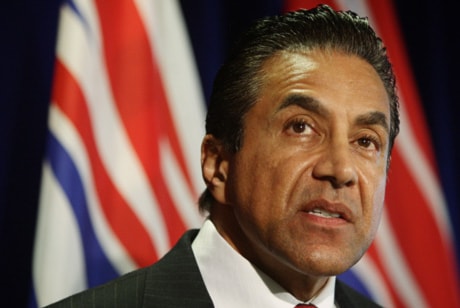VANCOUVER — The former judge conducting a public inquiry into Taser use has concluded the stun guns can kill or seriously injure people but that Canadians are better off with the controversial weapons than without them.
Immediately after Thomas Braidwood released his report Thursday, the B.C. government ordered all police, sheriffs and corrections officers in the province to “severely restrict the use of the stun guns.”
But the RCMP, a federally regulated force that polices about 70 per cent of British Columbia, said it won’t comply with the government’s directive until it’s had a chance to review Braidwood’s report.
The inquiry was prompted by a 2007 incident involving the Mounties at Vancouver International Airport, where four officers confronted, then Tasered Polish immigrant Robert Dziekanski, who died on the floor of the arrivals area.
At a news conference, Braidwood slammed the B.C. government for “abdicating” its responsibility for establishing standards for Taser use.
“Conducted energy weapons are unique — they are the only weapon designed to cause intense pain and to incapacitate through an electrical current,” he said in releasing a report into the use of Tasers among police forces
Braidwood said Tasers were introduced without prior independent government testing of their electrical safety or Canadian Standards Association approval.
Instead, police forces relied on the manufacturer’s assurances that they were safe, Braidwood said.
Braidwood said police should deploy a Taser only when someone is causing bodily harm or the officer is satisfied on reasonable grounds that the subject’s behaviour will imminently cause bodily harm.
He concluded 25 Canadians have died after encounters with Tasers.
But he stopped short of calling for a ban on Taser use, saying they’re better than guns and that in some police agencies, officers were able to resolve situations in up to 80 per cent of cases merely by displaying the weapon.
Taser International has always maintained there is not enough evidence to say its weapons kill.
In an email response Thursday to the report, spokesman Steve Tuttle said Braidwood’s report is an example of “politics trumping science.”
“Commissioner Braidwood’s recommendations do not meet the realities of modern day law enforcement,” Tuttle wrote.
He also said medical research “has consistently demonstrated that Taser devices are safe and effective when used properly.”
But Braidwood disagreed.
“Although the research conducted to date leaves much to be desired, I have concluded that we do know enough about conducted energy weapons to make decisions about their use,” he said.
Braidwood said an exhaustive look at the medical research surrounding Tasers leads him to conclude the weapons can cause heart irregularities.
The risks are especially acute for those who are medically or emotionally compromised and when the Taser has been deployed several times.
“Deploying a conducted energy weapon against an emotionally disturbed person is, in most cases, the worst possible response,” Braidwood said.
His report includes 19 recommendations on changes he says are needed to make the weapons safer.
They include crisis intervention training for all police recruits and current officers, especially when dealing with emotionally disturbed people.
Braidwood also recommended that officers be prohibited from discharging a Taser for longer than five seconds in most cases and that paramedic assistance be requested whenever the weapon is deployed in a medically high-risk situation.
He called for officers to have an automated external defibrillator available whenever a stun gun is assigned to them.
Solicitor General Kash Heed said effective immediately, all police, sheriffs and corrections officers in the province severely restrict the use of conducted-energy weapons.
Heed said that includes RCMP, whose contract with the province is currently under renegotiation.
“I am quite confident those organizations will follow the directive that was received today,” Heed said. “I expect it to be followed.”
But Sgt. Tim Shields, the Mounties chief B.C. spokesman, said the force needs time to review Braidwood’s lengthy report.
“We’re aware of that directive,” Shields said in an interview.
“But in consideration of the fact that we’ve only been in possession of the report for two and a half hours and this has implications to well over 100 detachments in British Columbia, as well as to the RCMP right across Canada, it is too early to respond with just a simple yes or no.”
Shields said the review would be conducted as quickly as possible.
Shields noted the RCMP’s own restrictions on use of the stun gun, implemented last year after a review, are closely aligned to Braidwood’s recommendations.
Heed, former chief of the West Vancouver police, indicated compliance with the Braidwood recommendations would be a condition of renewing the RCMP’s policing contract.
“That’s definitely something that we will be in discussions with the province about,” Shields said.
